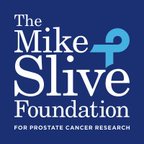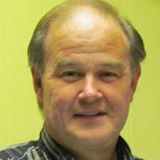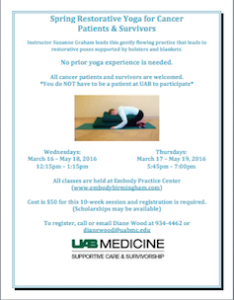By Beena Thannickal/UAB News/Oct. 5, 2015

A new University of Alabama at Birmingham research study reports that brentuximab vedotin is an effective and safe first course of treatment for older patients with Hodgkin lymphoma that cannot be treated with conventional combination chemotherapy.
Results of the study, led by Andres Forero, M.D., professor in the UAB Division of Hematology and Oncology, were published online last month in Blood, the journal of the American Society of Hematology.
In 2014, about 9,190 patients were diagnosed with Hodgkin lymphoma in the United States, and up to 20 percent of newly diagnosed Hodgkin Lymphoma patients are 60 years of age or older.
While standard chemotherapy can achieve complete remissions and cures in younger patients with Hodgkin lymphoma, the majority of those 60 and older either are ineligible because of other serious medical conditions or refuse treatment in order to avoid complications related to drug toxicity.
“The biology in older patients may differ from that of younger patients,” Forero said. “Additionally, the presence of other illnesses, particularly cardiac dysfunction, may limit administration of standard regimens. It became clear to us that, as the rate of remission is much lower for older compared to younger Hodgkin lymphoma patients, there is a clear need for less toxic treatments that allow patients 60 and older to complete their full regimen without complications or interruptions.”
Forero, a senior scientist at the UAB Comprehensive Cancer Center, has a long history of developing promising therapies for lymphoma and of working with drugs like brentuximab vedotin, a therapy that targets Hodgkin lymphoma cells and delivers a potent dose of chemotherapy without harming healthy cells. In previous studies, brentuximab vedotin has been shown to achieve remissions in patients with relapsed or treatment-resistant disease.
To examine the potential of brentuximab vedotin as a first course of treatment for older Hodgkin lymphoma patients, Forero and his team evaluated 26 patients, ages 64-92, who were ineligible for conventional chemotherapy or declined treatment after receiving information about its risks. The aim was to gather more information about the safety of brentuximab vedotin and how well it worked.
Researchers administered 1.8 mg/kg of intravenous brentuximab vedotin treatment every three weeks for up to 16 doses. Those who benefited from the drug could continue beyond this time period until disease progression, unacceptable toxicity or study closure. Patients received a median of eight cycles, with four completing 16 and one completing 23 cycles.
“In this population of older patients with Hodgkin lymphoma who were unfit for standard chemotherapy, we observed that brentuximab vedotin as a single agent produced a very high rate of response, including a very high rate of complete remission,” Forero said.
At the time of analysis, 92 percent of patients achieved a complete or partial response to the drug that lasted about 9.1 months. Of those, 73 percent achieved a complete remission that lasted about 9.2 months. The treatment was generally well-tolerated and consistent with previous reports of brentuximab vedotin in patients with relapsed and treatment-resistant Hodgkin lymphoma. As expected, the toxicity that was observed was mild and reversible sensory neuropathy, which is decreased sensitivity in the fingers and toes. Fewer than half of the patients experienced fatigue and nausea.
“While we observed promising responses, the next step is to evaluate this drug in combination with additional chemotherapy or immunotherapies that might allow us to prolong the response without relapse,” Forero said.
Direct funding for this research was issued by Seattle Genetics, Inc., through the joint financial support of Seattle Genetics, Inc., and Takeda Pharmaceuticals International Co.
http://www.uab.edu/news/focus-on-patient-care/item/6569-uab-study-finds-possible-frontline-therapy-for-older-patients-with-hodgkin-lymphoma
 What a privilege and thrill to be on hand last week for the official launch of the Mike Slive Foundation for Prostate Cancer Research. It was exciting to imagine the possibilities — for better detection, for better treatments, for cures — to combat a cancer that strikes one in seven men.
What a privilege and thrill to be on hand last week for the official launch of the Mike Slive Foundation for Prostate Cancer Research. It was exciting to imagine the possibilities — for better detection, for better treatments, for cures — to combat a cancer that strikes one in seven men. David York was a friend and a member of the Survivors CAN board. He had been diagnosed with advanced prostate cancer at age 44. At the time, reaching his 50th birthday seemed a long shot. When pressed, doctors told him he had a couple of years to live.
David York was a friend and a member of the Survivors CAN board. He had been diagnosed with advanced prostate cancer at age 44. At the time, reaching his 50th birthday seemed a long shot. When pressed, doctors told him he had a couple of years to live.
 hat UAB’s Comprehensive Cancer Center offers cancer patients and survivors through its restorative yoga program. Classes meet once a week at Embody Practice Center on Montclair Road, and instructor Suzanne Graham leads students through some gentle stretching exercises before helping them into so-called restorative postures. It is a yummy place to be! The cost to participants is $50 for a 10-week course. That’s $5 for an hour of relaxation and healing — a bargain! The spring classes have just begun. The options are midday Wednesday and Thursday evening. If you are interested and want to register, email Diane Wood at dianewood@uabmc.edu.
hat UAB’s Comprehensive Cancer Center offers cancer patients and survivors through its restorative yoga program. Classes meet once a week at Embody Practice Center on Montclair Road, and instructor Suzanne Graham leads students through some gentle stretching exercises before helping them into so-called restorative postures. It is a yummy place to be! The cost to participants is $50 for a 10-week course. That’s $5 for an hour of relaxation and healing — a bargain! The spring classes have just begun. The options are midday Wednesday and Thursday evening. If you are interested and want to register, email Diane Wood at dianewood@uabmc.edu.